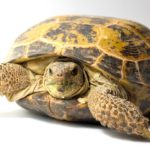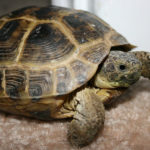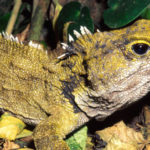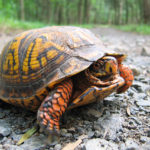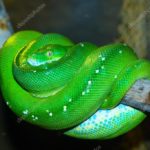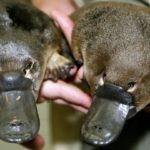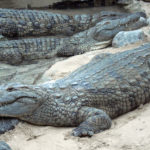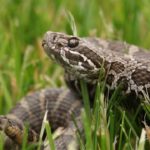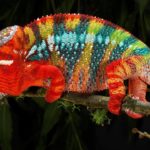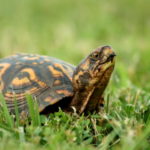Tortoises
 Tortoises, a group of reptiles, the only representatives of reptiles, whose body is covered with a shell. They are found in all warm regions of the world. Several species – the inhabitants of the seas and oceans, but mostly land and freshwater forms.
Tortoises, a group of reptiles, the only representatives of reptiles, whose body is covered with a shell. They are found in all warm regions of the world. Several species – the inhabitants of the seas and oceans, but mostly land and freshwater forms.
This group appeared in the Triassic ca. 200 million years ago. Perhaps the turtles originated directly from cotylosaurs, the most primitive reptiles. Although the fossil remains confirming this hypothesis are few, the extinct genus Eunotosaurus is quite suitable for the role of an evolutionary “connecting link”. This animal had a flattened body and heavily dilated ribs.
Unlike their relatives, snakes, turtles rarely served as objects of worship and never instilled a special fear. Indeed, they practically do not represent a danger to human life. Unless the swimmer, who is too close to the male skinned turtle (Dermochelys coriacea), can be caught by his strong flippers and drowned. The fact is that in a state of strong sexual arousal, he is able to take any large object for a female.
Marriage behavior begins with courtship, the forms of which are species-specific. The male can “butt” and push the female, gently biting it. In large turtles courtship is sometimes accompanied by a loud grunt. Males of the painted turtle (Chrysemys picta) and decorated tortoises (Pseudemys) show tender feelings in a special way: swimming backwards and dragging the female behind them, they stroke or pat her in the face with the long claws of their front paws.
Mating can occur on the ground or in water. In this case, the penis, in a quiet state hidden at the base of the tail, extends through the opening of the cloaca. Females of some species of turtles may long store viable sperm (this is common in some other vertebrates), and one pairing allows them to lay off fertilized eggs for several years to come. However, their number decreases every year until a new portion of sperm is received.
Eggs of turtles are oval or round, white or almost white. Females bury them in the ground to a depth not exceeding the length of the hind legs, or they hide in a heap of rotting plants. Most often these are well-lit places. Usually there is one masonry per year, but in some sea turtles their number reaches seven per one breeding season. Eggs in the masonry, depending on the species from one to 200.
None of the known vertebrates do not live as long as the turtles. Most of the information that their lifespan is little more than 50 years refers to the captive. Some species, of course, live much longer. The age of the Carolina box turtle (Terrapene carolina), found on Rhode Island, almost certainly reached 130 years. The maximum period is approx. 150 years, but it is possible that the actual lifespan of individual individuals is much greater.
Turtles as a whole can be called omnivorous, although some species prefer plant food, other animals, and others eat everything. A strictly specialized diet is rare. Some water turtles feed only under water. Very young individuals need daily food, but for adults this is not necessary. In fact, after eating well, they can for months, and perhaps for years, do without food.
There are no teeth for turtles, and the sharp edges of their jaws can snack food, but do not chew it. With tough fibrous plants, turtles are not easy to cope with, and animal meat sometimes has to be torn to pieces with the help of claws on the front paws. In some species within the mouth there are horn combs that allow crushing prey protected by hard covers.

